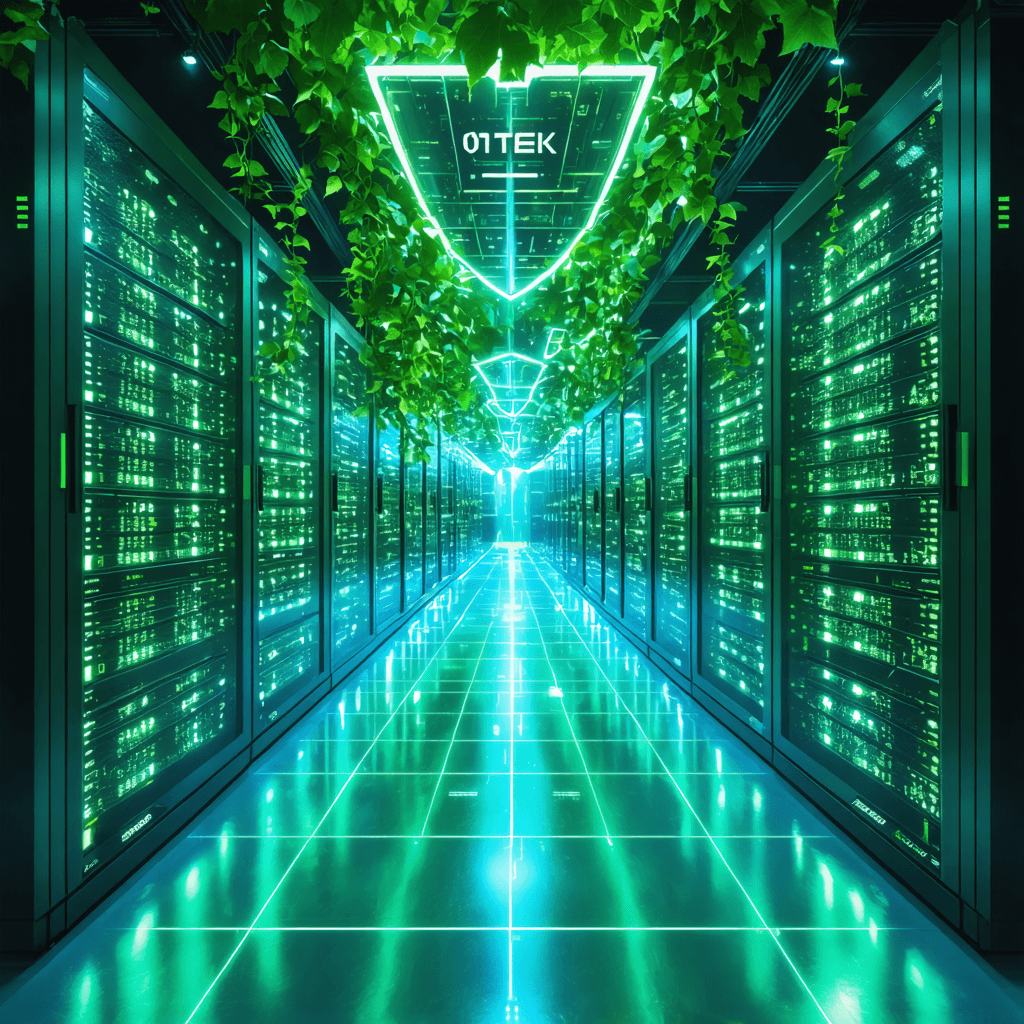Green Computing vs Hidden Threats: Balancing Eco-Efficiency with Cybersecurity in Modern Tech
In today's rapidly evolving digital landscape, organizations face an intricate balancing act between implementing environmentally conscious computing practices and maintaining robust cybersecurity measures. This complex relationship between green computing and security presents both opportunities and challenges that modern businesses must navigate carefully.

The Green Computing Imperative
As we progress through 2025, the urgency for sustainable technology practices has never been more apparent. Green computing initiatives have become a cornerstone of corporate environmental responsibility, focusing on:
- Energy-efficient hardware and infrastructure
- Sustainable data center operations
- E-waste reduction and responsible disposal
- Cloud optimization and resource virtualization
- Smart power management systems
Recent studies indicate that the technology sector accounts for a significant portion of global carbon emissions, making it crucial for organizations to adopt eco-friendly computing practices. According to recent trends, companies implementing green computing solutions have seen up to 40% reduction in their energy costs while significantly decreasing their carbon footprint.
The Cybersecurity Challenge
While pursuing environmental objectives, organizations must not compromise on security. The cyber threat landscape continues to evolve at an unprecedented pace, with several key concerns:
- Increased Attack Surface: The shift to energy-efficient cloud solutions and virtualized environments has expanded the potential attack surface for cybercriminals.
- IoT Vulnerabilities: Smart energy management systems, while essential for green computing, introduce new security risks.
- Supply Chain Risks: Sustainable technology initiatives often involve multiple vendors and partners, increasing supply chain security concerns.

Finding the Balance
1. Sustainable Security Architecture
Modern organizations are adopting integrated approaches that address both environmental and security concerns:
- Implementation of energy-efficient security solutions
- Use of AI and machine learning for both security monitoring and power optimization
- Development of secure-by-design green infrastructure
- Regular security audits of environmental management systems
2. Data Center Innovation
The evolution of data center technology demonstrates how security and sustainability can complement each other:
- Implementation of liquid cooling solutions that reduce energy consumption while protecting sensitive hardware
- Advanced access control systems that enhance security while minimizing power usage
- Modular design approaches that facilitate both security updates and energy efficiency improvements
3. Cloud Computing Optimization
Cloud services have become instrumental in achieving both environmental and security objectives:
- Reduced physical infrastructure requirements
- Enhanced disaster recovery capabilities
- Improved resource utilization
- Advanced security features with minimal energy overhead
Best Practices for Implementation
Integrated Strategy Development
- Align security and sustainability goals
- Establish clear metrics for both environmental impact and security effectiveness
- Regular assessment and adjustment of strategies
Technology Selection
- Choose solutions that offer both security features and energy efficiency
- Evaluate the total environmental impact of security measures
- Consider the long-term sustainability of security implementations
Staff Training and Awareness
- Develop comprehensive training programs that cover both security and environmental responsibilities
- Create a culture of environmental consciousness without compromising security vigilance
- Regular updates on new threats and sustainable practices
Compliance and Reporting
- Maintain documentation of both environmental and security measures
- Regular auditing of combined initiatives
- Transparent reporting on achievements and challenges
Future Outlook
The convergence of green computing and cybersecurity will continue to evolve, driven by:
- Advances in quantum computing and its impact on both security and energy efficiency
- Development of new sustainable materials for computing hardware
- Evolution of AI-driven security solutions with minimal environmental impact
- Increasing regulatory requirements for both environmental protection and cybersecurity
Practical Steps Forward
Organizations looking to balance green computing with cybersecurity should:
- Conduct comprehensive audits of current infrastructure
- Develop integrated strategies that address both concerns
- Invest in technologies that offer dual benefits
- Establish clear metrics for success in both areas
- Regular review and updating of policies and procedures
Ready to enhance your expertise in green computing and cybersecurity? Explore our comprehensive courses and resources at 01TEK. Our expert-led programs will help you master the balance between environmental responsibility and robust security measures. Visit our website today to start your journey toward becoming a leader in sustainable and secure technology implementation.
Sources: 1. World Economic Forum Future of Jobs Report 2. Munich Re Cyber Insurance Trends 3. Gartner Green Computing Impact 4. Deloitte Technology Industry Outlook 5. Google Sustainability Report
If I find 10,000 ways something won’t work, I haven’t failed. I am not discouraged, because every wrong attempt discarded is often a step forward.
Thomas Edison



